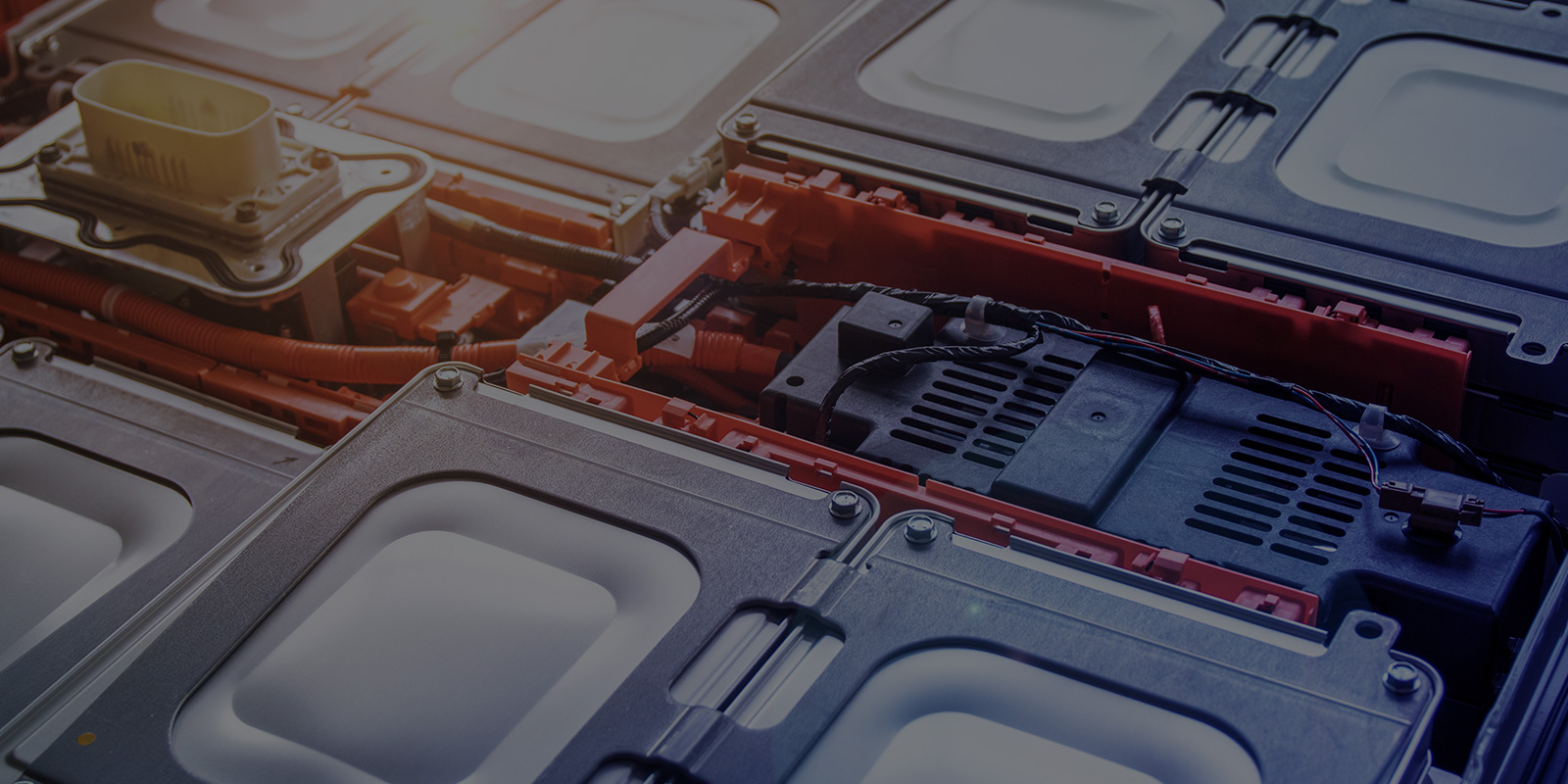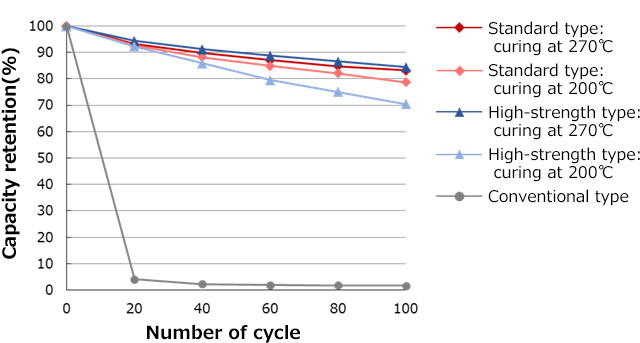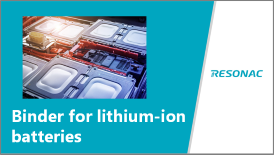- Category:
- Tag:
Applicable Business AreasManufacturers of lithium-ion batteries
Target ApplicationsMotor batteries for vehicles, private-use batteries
Applicable Business AreasManufacturers of lithium-ion batteries
Target ApplicationsMotor batteries for vehicles, private-use batteries

In the automotive industry which is constantly moving toward electric motorization due to the growing environmental awareness, efforts are being made to realize higher capacity of lithium-ion batteries used as a power source for motors. For this reason, considerations are given to utilization of silicon-based metallic materials as the anode active material, as they have higher theoretical capacity than the conventional graphite.
Silicon-based active materials, however, have a property to expand in volume when they are charged, and thus expansion and contraction take place along with charging and discharging. Therefore, the issue of the utilization of silicon-based active materials for higher capacity of lithium-ion batteries is the separation between the active materials or between the active materials and collectors in the process of repeated volume expansion and contraction caused by charging and discharging.
Our lithium-ion battery binder uses polyamide-imide resin which exhibits excellent coating film strength. It keeps the adhesion even in the expansion/contraction of the active materials and thus improves the cycling performance of lithium-ion batteries.
Research and development are underway to utilize silicon-based active materials having higher theoretical capacity for the anode, instead of graphite, with a view to realizing higher capacity for lithium-ion batteries. On the other hand, the silicon-based active materials have a property to undergo large volume changes during charging and discharging. The active materials which repeatedly expand and contract in the battery charging/discharging can cause separation between active materials themselves or active materials and collectors, deformation and cracking in the electrodes and thereby deteriorate the battery’s cycling performance.
Our lithium-ion battery binder uses polyamide-imide resin which forms strong coating films with the elastic modulus of 2.5 GPa or over and tensile strength of 100 MPa or over. This enables to inhibit the deformation in the electrodes caused by the expansion or contraction of silicon-based active materials.
Moreover, the conventional binders allowed the addition of silicon-based active materials undergoing large volume changes only in a little amount, a few per cent of the anode material for inhibiting the deformation and cracking in the electrodes. Our binder is capable of allowing the addition of silicon-based active materials up to 30% while controlling the electrode deformation and maintaining the battery capacity through the cycling (100 cycles, 70% or more based on our test results). The binder allows for the increases in the addition of silicon-based active materials and thereby contributes to the higher capacity of lithium-ion batteries.
Laminated cell battery characteristics assessment test

Binder:
Charging:
CC, CV 0.05 CA, 4.2 V, ending at 1/100 CA
Discharging:
CC 0.05 CA, ending at 2.5 V
Our lithium-ion battery binder exhibits elastic modulus of 2.5 GPa or over and tensile strength of 100 MPa or over. It does not easily follow or get stretched by the large volume changes of silicon-based active materials and thus inhibits the electrode deformation. In addition, its excellent adhesion to the collector copper foils can improve the reliability of negative electrodes. Resistant to chemicals, it is capable of maintaining its elastic modulus and tensile strength even after being immersed in the electrolytic solution.
Our lithium-ion battery binder demonstrates its coating film strength and other characteristics at the curing temperatures between 200 and 270℃. It is thus possible to lower the curing temperatures by about 30 to 100℃, compared to polyimide type binders having the similar functions.

Contact Us
Please don't hesitate to contact us if you have any questions.